Steve Jobs: A Visionary in Technology and Design
Introduction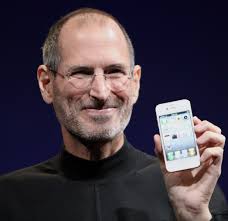
Many people consider Steve Jobs, a co-founder of Apple Inc., to be one of the most important individuals in the history of design and technology. His unwavering quest for excellence and innovation revolutionized how we use technology and shaped the contemporary world’s digital environment. Jobs’ early life, his work at Apple, the difficulties he encountered, his return to the firm, and his lasting legacy are all covered in this essay.
Early Life and Education
- Childhood and Family Background
Steve Jobs was born on February 24, 1955, in San Francisco, California. He was adopted shortly after birth by Clara and Paul Jobs, a working-class couple who instilled in him the values of hard work and creativity. Growing up in the suburbs of Cupertino, Jobs displayed an early interest in electronics and mechanics, often tinkering with gadgets in his father’s workshop.
- Education and Early Interests
Jobs attended Homestead High School, where he developed a passion for electronics and design. He was known for his rebellious spirit and unorthodox thinking, which set him apart from his peers. After graduating, Jobs enrolled at Reed College in Portland, Oregon, but dropped out after just one semester. Despite this unconventional path, he continued to audit classes that interested him, particularly in design and calligraphy, which would later influence Apple’s aesthetics.
The Founding of Apple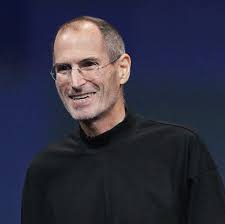
- The Birth of Apple Computer
In 1976, Jobs teamed up with his childhood friends Steve Wozniak and Ronald Wayne to launch Apple Computer. Their first product, the Apple I, was a simple circuit board sold without a casing or keyboard. However, it gained traction among hobbyists and early computer enthusiasts. The success of the Apple I laid the groundwork for the development of the Apple II, which was introduced in 1977 and became one of the first highly successful mass-produced microcomputer products.
- Innovative Design and Marketing
Jobs was instrumental in shaping the design and marketing strategies that set Apple apart from competitors. He emphasized the importance of aesthetics, user experience, and branding, believing that technology should not only function well but also be visually appealing. The sleek design of the Apple II, along with its color graphics capabilities, helped the company carve out a significant niche in the burgeoning personal computer market.
Challenges and Setbacks
- Conflict and Departure from Apple
Despite initial success, Jobs faced challenges within Apple. As the company grew, so did internal conflicts, particularly over management styles and vision for the future. In 1985, after a power struggle with the board of directors, Jobs was ousted from the company he had co-founded. This period was a difficult time for him, but it also sparked a new chapter in his career.
- NeXT and Pixar
Following his departure from Apple, Jobs founded NeXT Inc., a computer platform development company aimed at higher education and business markets. Although NeXT’s computers were advanced and innovative, they struggled to gain widespread acceptance due to their high price point. However, the technology developed at NeXT would later become the foundation for many of Apple’s future products.
Around the same time, Jobs acquired The Graphics Group, which would eventually be renamed Pixar Animation Studios. Under Jobs’ leadership, Pixar revolutionized the animation industry with groundbreaking films like “Toy Story,” which became the first fully computer-animated feature film. The success of Pixar not only solidified Jobs’ status as a visionary but also helped him build substantial wealth.
Return to Apple
- Acquisition and Leadership
In 1997, Apple was struggling financially and facing stiff competition from Microsoft and other tech companies. In a move to stabilize the company, Apple acquired NeXT for $429 million, bringing Jobs back into the fold. He quickly re-assumed leadership roles, becoming interim CEO and later formally taking the title of CEO.
- Revitalizing Apple
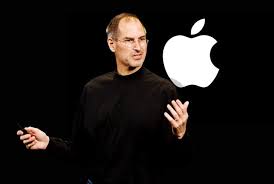
Upon his return, Jobs implemented significant changes to revitalize Apple. He streamlined the product line, focusing on a few key products rather than a vast array of options. This strategic shift not only improved efficiency but also enhanced brand clarity. He also emphasized design and user experience, leading to the development of iconic products like the iMac, which debuted in 1998. The Mac’s innovative design and ease of use marked a significant departure from the conventional PC aesthetic.
The Age of Innovation
- iPod and the Music Revolution
In 2001, Apple launched the iPod, a portable media player that transformed the music industry. The iPod’s sleek design, user-friendly interface, and integration with iTunes revolutionized how people purchased and listened to music. It marked the beginning of a new era for Apple and solidified Jobs’ reputation as a master of innovation.
- The iPhone and Mobile Computing
The introduction of the iPhone in 2007 was perhaps Jobs’ most significant contribution to technology. The iPhone combined a phone, an iPod, and an internet communicator into one device, fundamentally changing how we interact with technology. Its touchscreen interface and app ecosystem paved the way for a new generation of smartphones and apps, leading to a mobile revolution.
- The iPad and Beyond
In 2010, Jobs introduced the iPad, further expanding Apple’s influence in the tech market. The iPad created a new category of devices, bridging the gap between laptops and smartphones. Jobs’ vision of a connected, portable digital experience became a reality, influencing the design and functionality of tablets and mobile computing for years to come.
Leadership Style and Philosophy
- Visionary Leadership
Jobs has a reputation for being a charismatic and occasionally contentious leader. He was known for being strict and unyielding, encouraging his troops to pursue greatness. He emphasized the value of design and user experience and felt that great products were created by combining technology and the liberal arts.
- Focus on Innovation
Jobs’ relentless pursuit of innovation and perfection drove Apple to become one of the most valuable companies in the world. He encouraged a culture of creativity and risk-taking, fostering an environment where groundbreaking ideas could flourish. His belief in thinking differently became a central tenet of Apple’s brand identity.
- Personal Touch and Branding
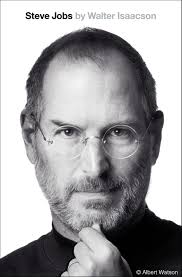
Jobs understood the power of branding and marketing. He was known for his captivating product launches, where he would unveil new products with theatrical flair. His ability to connect with consumers and create an emotional attachment to Apple products played a crucial role in building brand loyalty.
Health Struggles and Legacy
- Health Challenges
In 2004, Jobs was diagnosed with a rare form of pancreatic cancer. He initially kept his illness private, but his health struggles became public knowledge in the following years. Despite undergoing surgery and treatment, Jobs continued to lead Apple, making significant contributions until his condition worsened.
- Resignation and Final Years
In August 2011, Jobs resigned as CEO of Apple, naming Tim Cook as his successor. He continued to serve as chairman until his death on October 5, 2011. His passing marked the end of an era for Apple and the tech industry.
The Enduring Legacy of Steve Jobs
- Transformative Impact
Steve Jobs’ impact on technology, design, and culture is immeasurable. He revolutionized multiple industries, including personal computing, music, telecommunications, and entertainment. His vision of seamless integration between hardware and software set the standard for modern technology.
- Inspiration for Innovators
Jobs’ life story serves as an inspiration for entrepreneurs and innovators worldwide. His emphasis on creativity, design, and user experience continues to influence the tech industry and beyond. His legacy is evident in the products we use daily and the companies that strive to emulate his approach to innovation.
- Cultural Icon
Jobs, who embodies the nexus of creativity and technology, has emerged as a cultural figure. Numerous books, documentaries, and movies have focused on his life and career, showcasing his accomplishments and the lessons he learnt along the way.
Ending
In addition to being a successful businessman, Steve Jobs was a visionary who revolutionized how we use technology. His transformation from a disobedient young man to a revolutionary leader is evidence of the strength of imagination and ingenuity. Jobs had a lasting impression on the globe with his unwavering dedication to design and user experience, as well as his unrelenting pursuit of excellence.
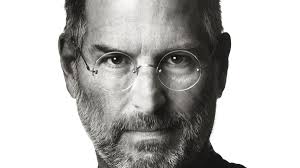
Future generations of inventors are still motivated by his legacy, which serves as a reminder of how technology may improve our lives and influence the course of the future. The values Jobs promoted—creativity, innovation, and the pursuit of perfection—remain more important than ever as we navigate an increasingly digital environment. The tale of Steve Jobs is one of tenacity, ingenuity, and an unwavering will to make a difference in the world.

